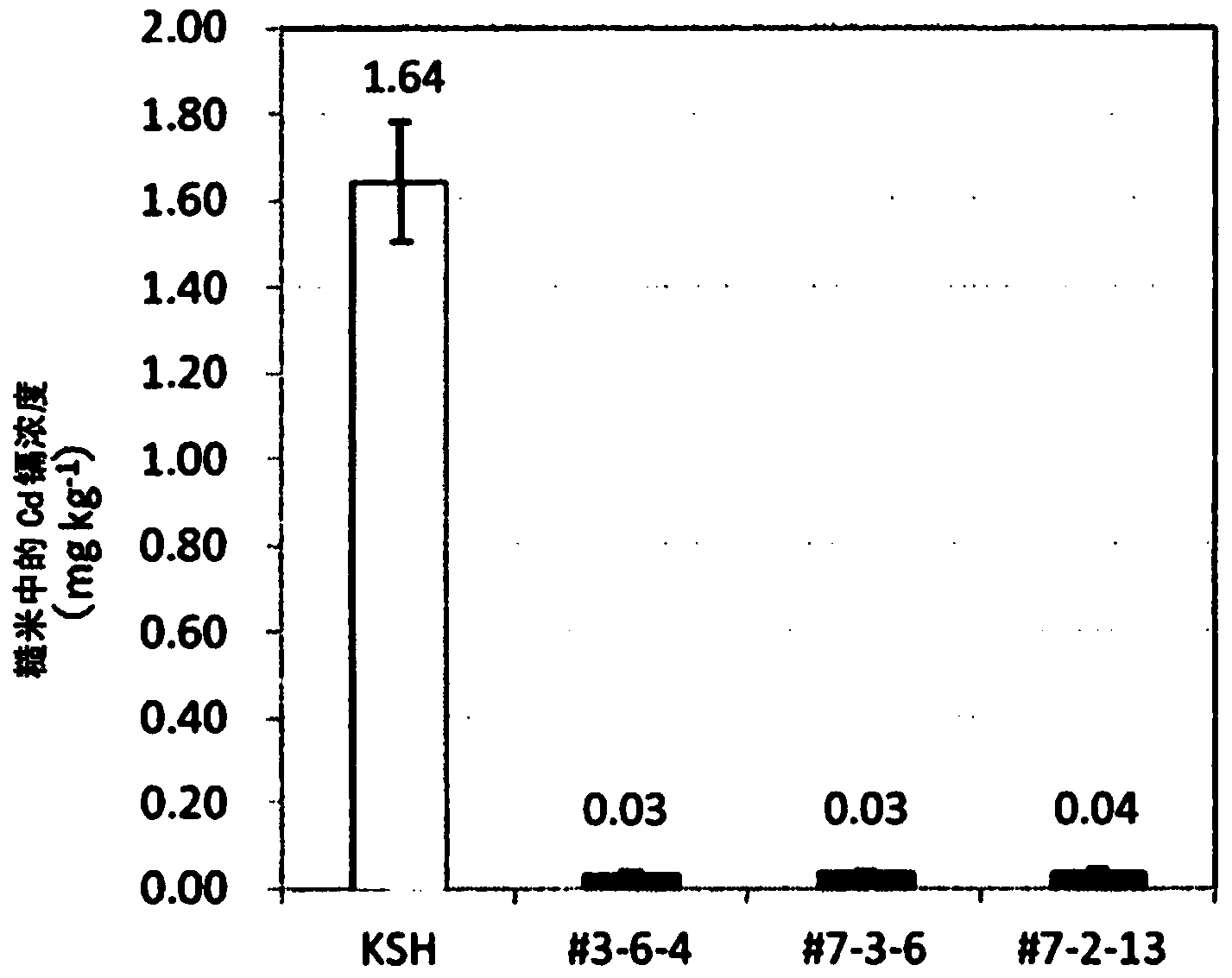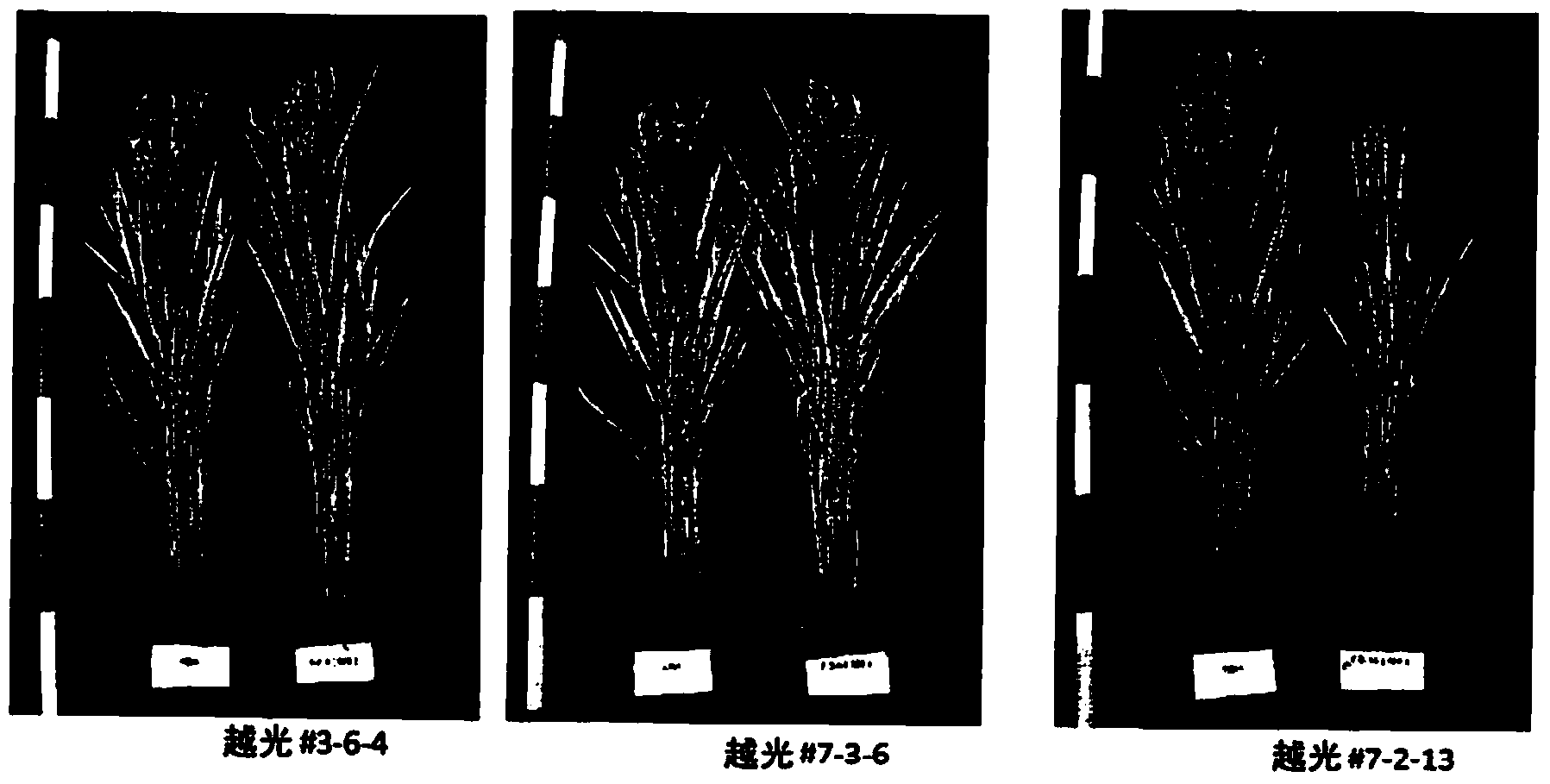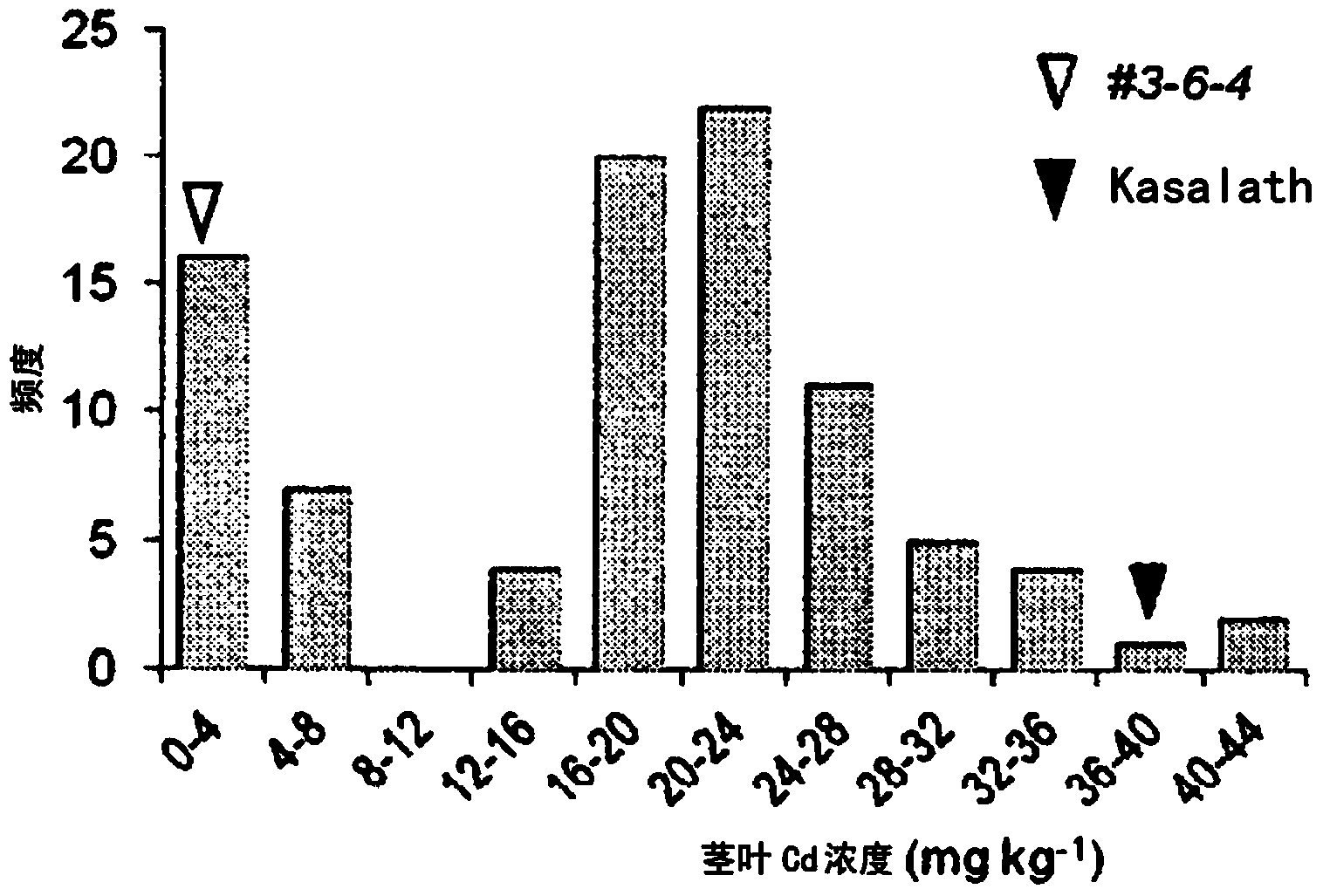Cadmium absorption regulation gene, protein, and rice plant having reduced cadmium absorption
A protein and gene technology, applied in the direction of genetic engineering, plant genetic improvement, testing of pharmaceutical preparations, etc., to achieve the effect of high practicability
- Summary
- Abstract
- Description
- Claims
- Application Information
AI Technical Summary
Problems solved by technology
Method used
Image
Examples
Embodiment 1
[0119]
[0120] (heavy ion beam irradiation)
[0121] Rice (variety Koshihikari) seeds (this seed is the first generation) irradiated with heavy ion beams (carbon ions, 320MeV, 40Gy) using TIARA Seeds, hereinafter referred to as M1 for short, and the 2nd, 3rd generations, etc. are referred to as M2, M3, etc.) 3500 grains were sown in culture soil (manufactured by Sumitomo Chemical Co., Ltd., trade name: Bonsol No. 1), and the seedlings obtained were individually The soil was transplanted to the paddy field owned by the (Independent) Agricultural Environmental Technology Research Institute, and M2 seeds were obtained from each individual through the routine cultivation management of the (Independent) Agricultural Environmental Technology Research Institute. About 100,000 of the obtained M2 seeds were all mixed, and tested in the following screening step for low Cd mutants.
[0122] (The screening method for low Cd mutants is a simple screening method based on its 1-ductal Cd...
Embodiment 2
[0133]
[0134] (Evaluation under hydroponic cultivation conditions)
[0135] M3 system seeded with low-Cd mutants (#3-6-4, #7-3-6, #7-2-13) selected by brown rice Cd concentration as an index and Koshihikari without heavy ion beam treatment (Hereinafter simply referred to as Koshihikari.) Seeds were treated with Cd on the seedlings after 10 days in the same manner as in Example 1 by the hydroponics method. Four days after the Cd treatment, the harvest was carried out, and the leaves and roots were divided into stems and leaves and dried. This dried material was decomposed with strong acid by the same method as the brown rice of Example 3. In addition to Cd, the decomposed solution contains manganese (Mn), copper (Cu), iron (Fe), and zinc (Zn), which are essential elements for plants, and all these elements are passed through inductively coupled plasma. Simultaneous measurement was performed with an optical emission analyzer (ICP-OES) (manufactured by Agilent Corporation, ...
Embodiment 3
[0143]
[0144] (Microarray Chip Experiment)
[0145] Using the mutant (#3-6-4) and Koshihikari root, RNA was extracted according to the protocol of RNA Purification Kit (manufactured by Rizo Co., Ltd., trade name: RNA Sui Sui-S). The concentration of RNA was detected by a spectrophotometer (manufactured by Thermo Fisher Scientific, trade name: NanoDrop NanoDrop 1000) to detect whether the extracted RNA was decomposed, and its quality was detected by Bio Analyzer 2100 from Agilent.
[0146] Using all the extracted RNA (400 ng), a reverse transcription reaction was performed using T7 promoter primer (Agilent) to synthesize cDNA. Labeling was synthesized by adding Cyanine3 (hereinafter referred to as Cy3) and Cyanine5 (hereinafter referred to as Cy5) for fluorescent labeling, and reacting in a Transcription Mix solution (Agilent) containing T7 RNA polymerase cRNA.
[0147] The labeled cRNA extracted and synthesized from each of the above individuals was purified using the Qi...
PUM
 Login to View More
Login to View More Abstract
Description
Claims
Application Information
 Login to View More
Login to View More - R&D
- Intellectual Property
- Life Sciences
- Materials
- Tech Scout
- Unparalleled Data Quality
- Higher Quality Content
- 60% Fewer Hallucinations
Browse by: Latest US Patents, China's latest patents, Technical Efficacy Thesaurus, Application Domain, Technology Topic, Popular Technical Reports.
© 2025 PatSnap. All rights reserved.Legal|Privacy policy|Modern Slavery Act Transparency Statement|Sitemap|About US| Contact US: help@patsnap.com



